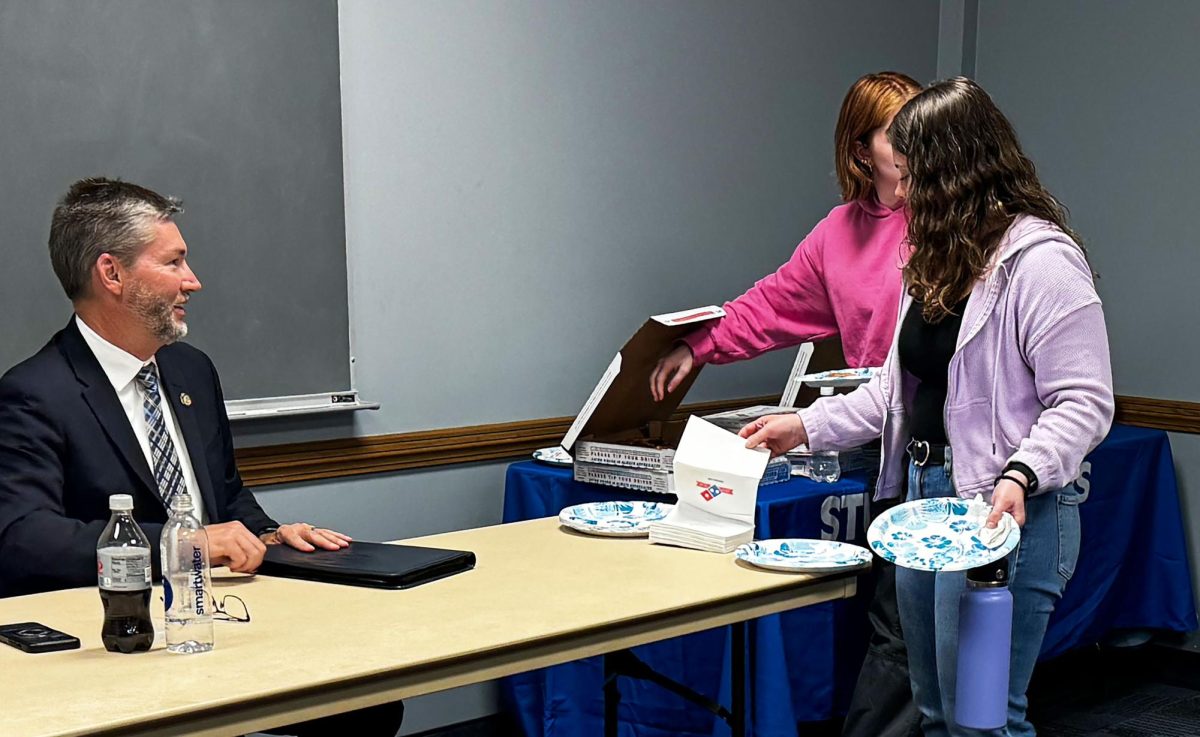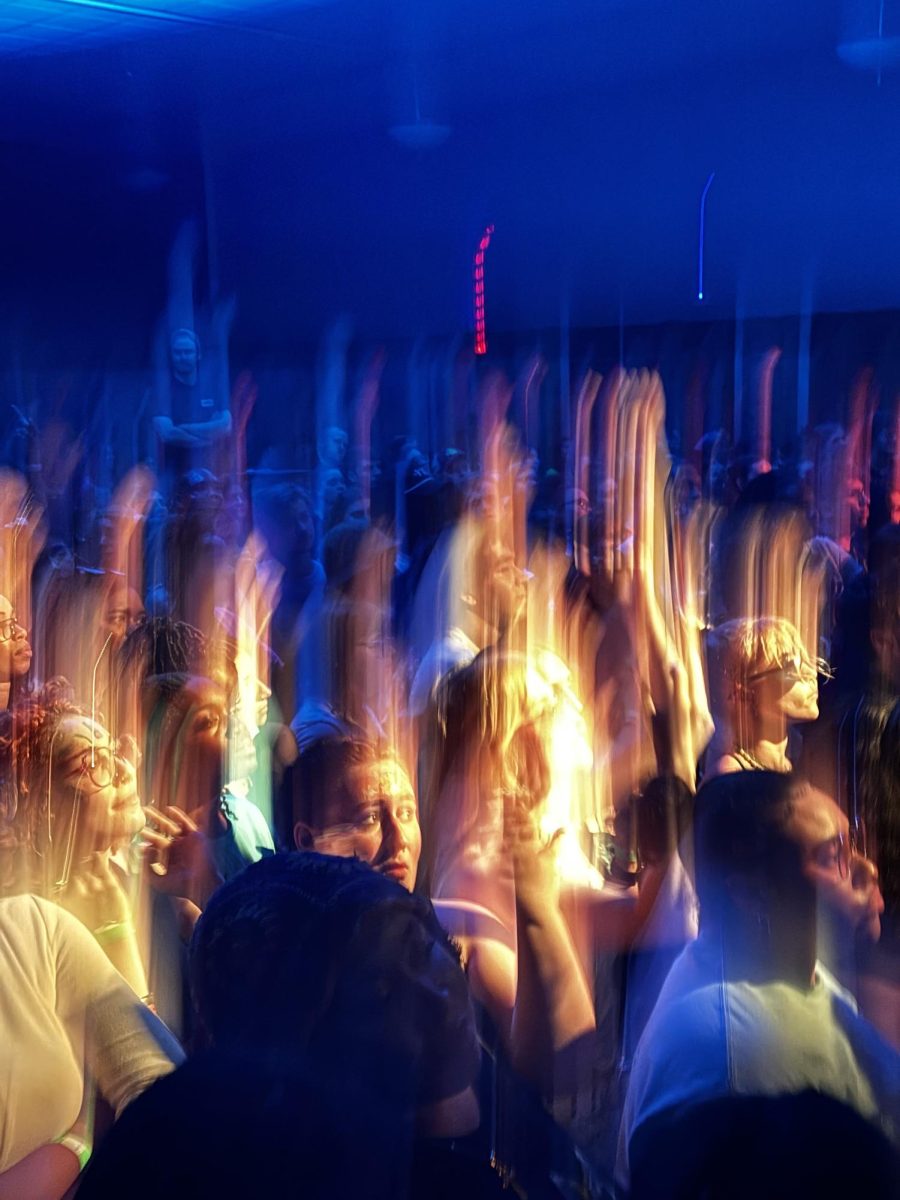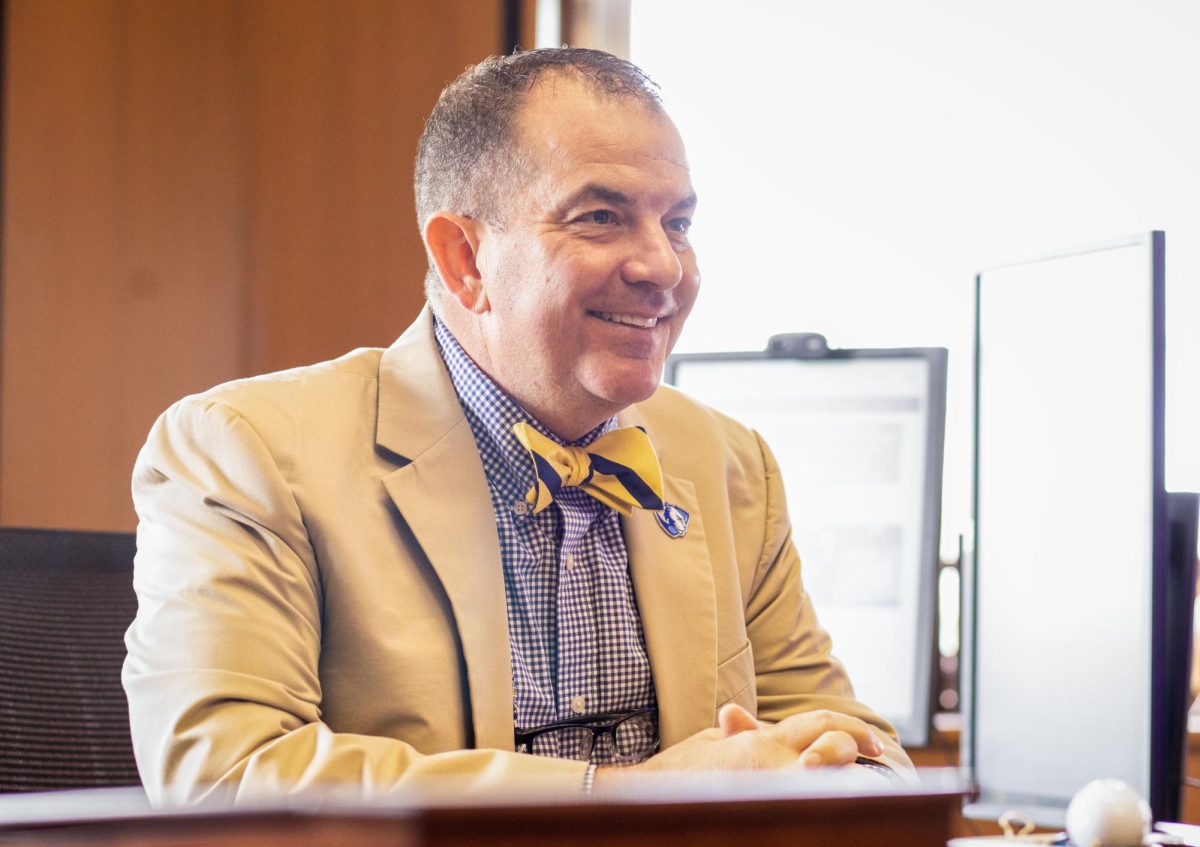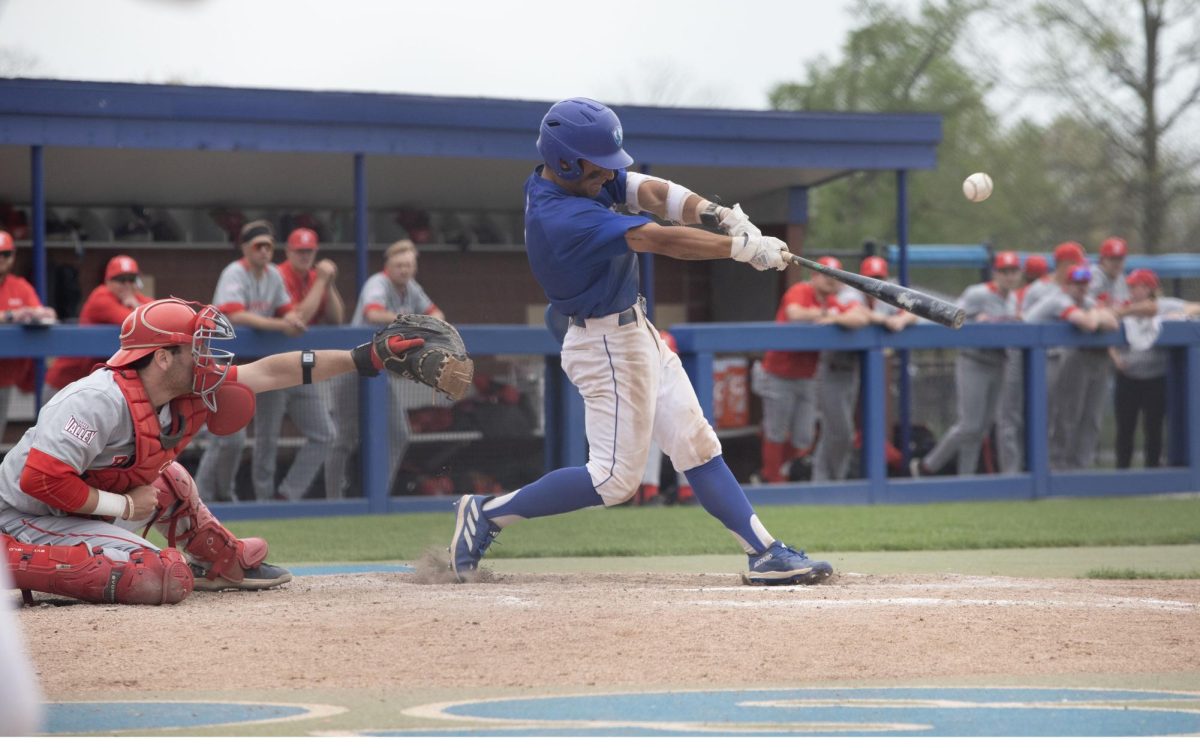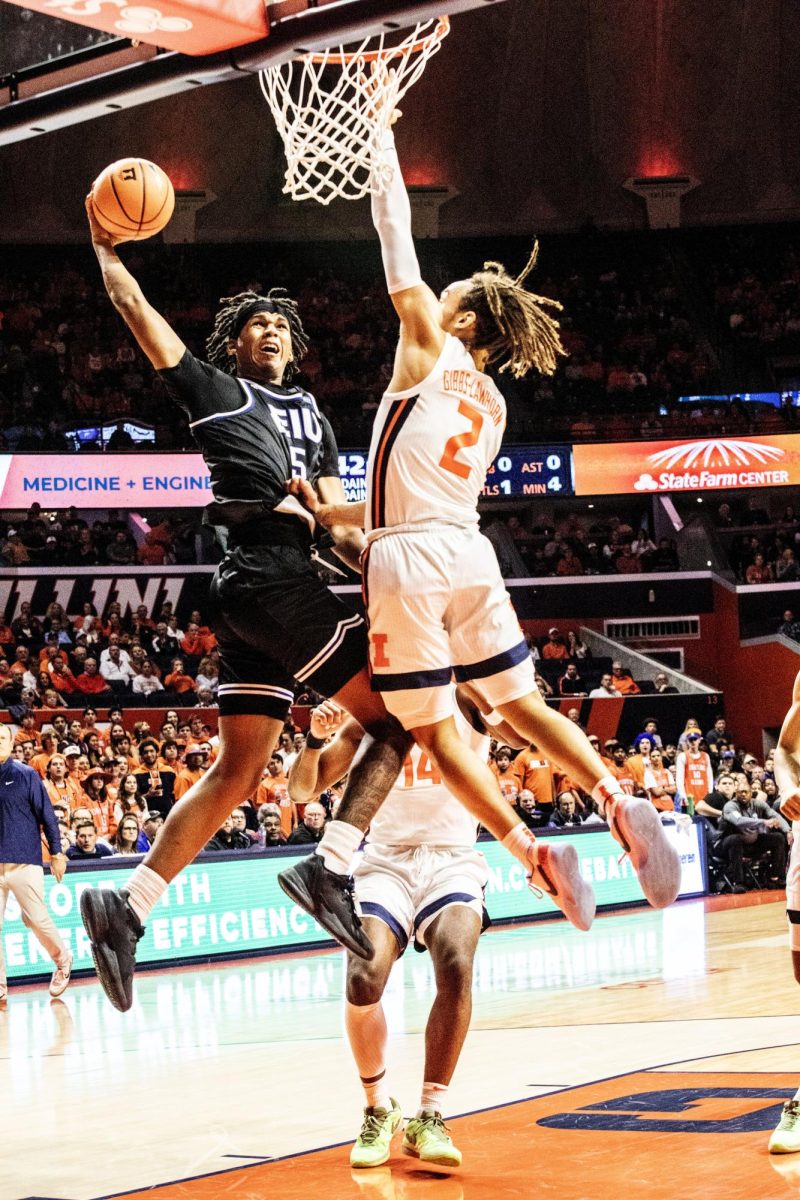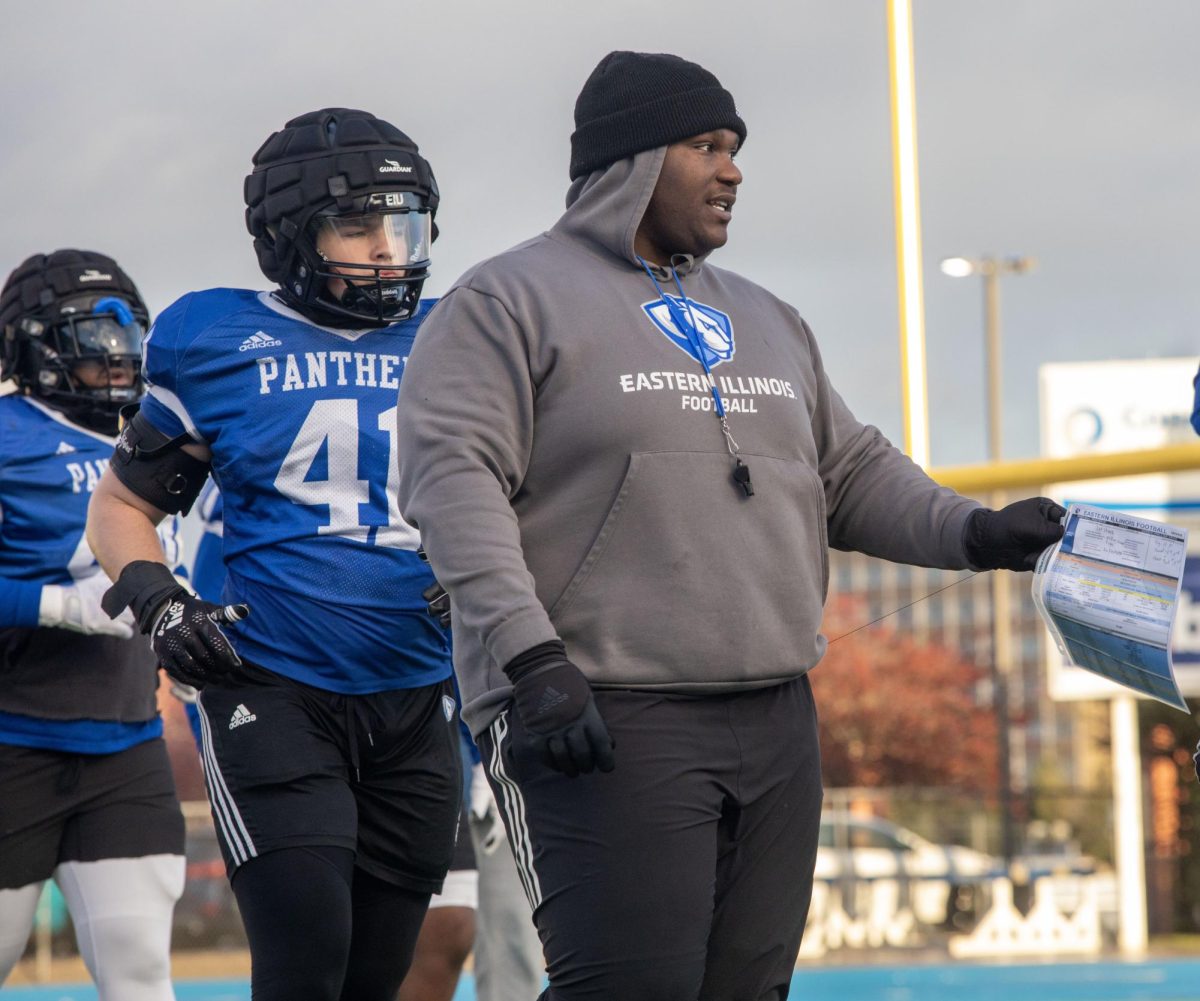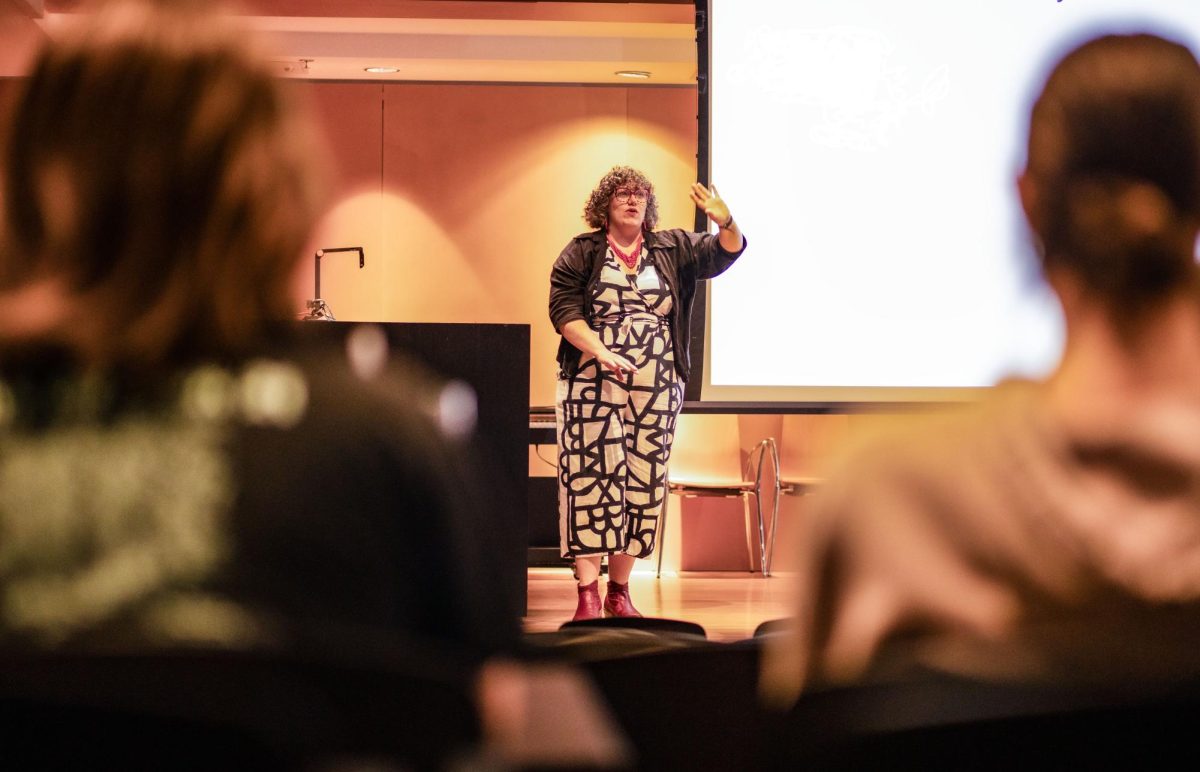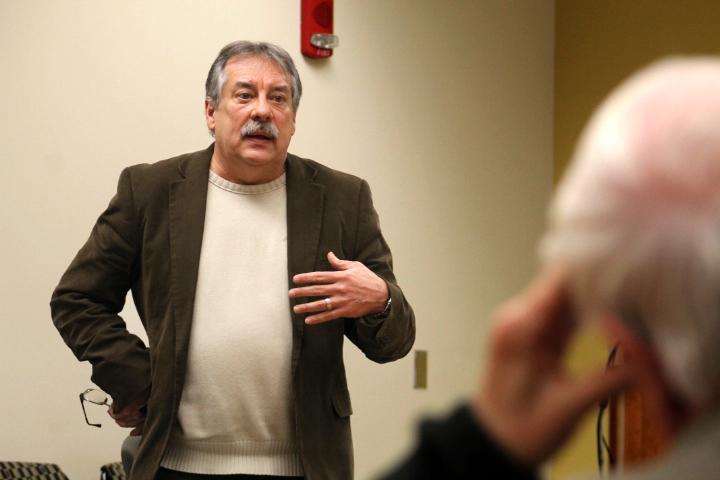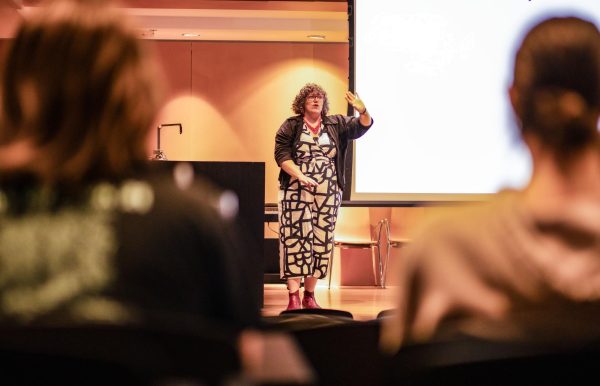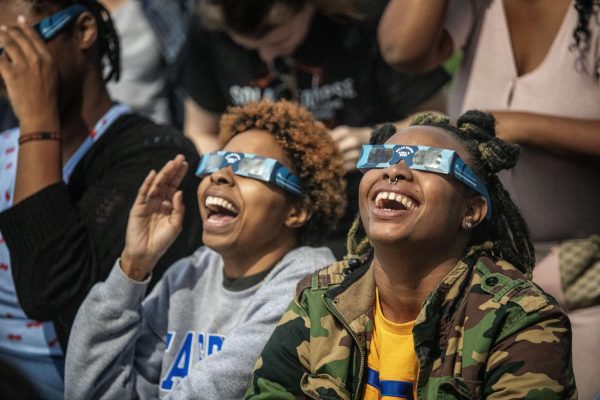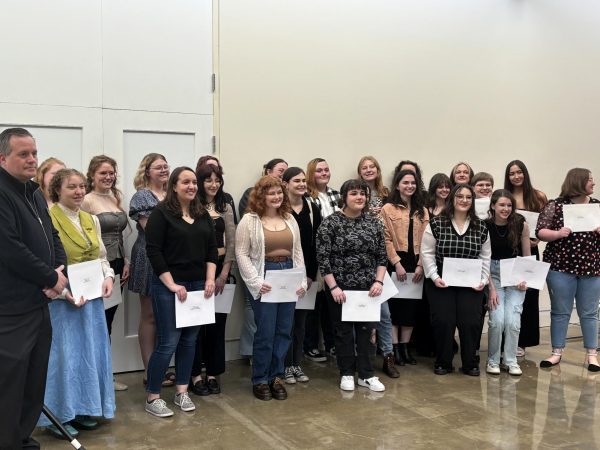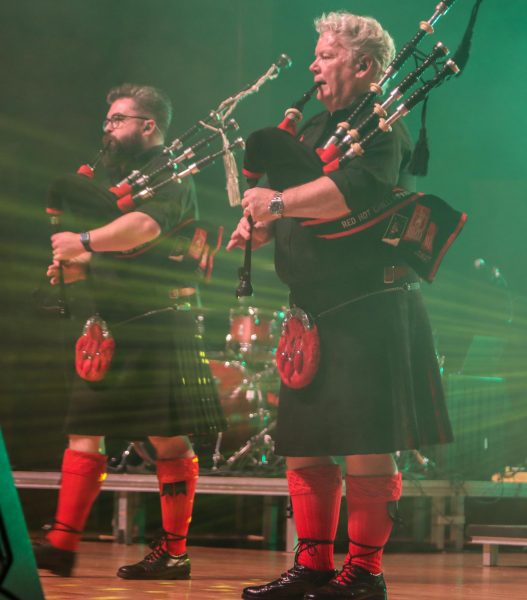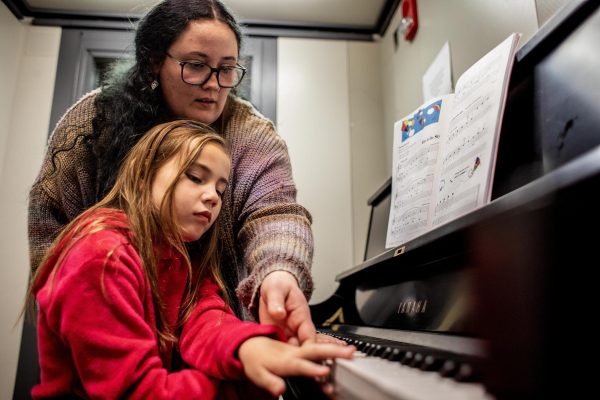Faculty speaks on American, Native American interactions
Dr. Terry Barnhart, a professor of history, answers a question during the American Captivity Narratives: A Literary Genre of Enduring Interests panel discussion on Monday in the Witters Conference Room of the Mary J. Booth Library.
February 23, 2015
Eastern faculty and staff shared their research on white European settlers who had been held captive by Native Americans in the early 1800s with the public Monday afternoon in the Witters Conference Room at Booth library.
There was a panel discussion in relation to the library’s event series that is based off the lives of Cynthia Ann Parker, her son Quanah Parker and the history of the Parker family.
The discussion was moderated by history professor Terry Barnhart.
The panel focused on women and children who were kidnapped during raids of forts.
Fort Parker was named as an example of one of the forts that was raided.
Janice Derr, assistant professor of library services, English professor Angela Vietto, and Laura Russman, a graduate student in historical administration, lead the discussion panel.
Russman was the first one to speak in the panel.
Her topic was on a captivity narrative that Barnhart said she grew up hearing about at an early age.
Russman said the idea to research further into the captivity narrative started when she was in Barnhart’s history class at Eastern.
She said she was always interested in representations of Native Americans in all kinds of forms, such as movies and books.
She decided to explore the narrative of a woman named Hannah Duston, who was captured in the year 1697 by the Native Americans.
“She was a mother of nine and she had just given birth to her newborn so she recovering from that when she was captured,” she said. “Her children and husband had been able to escape.”
Russman said there are different versions of the same story because it has been retold by word of mouth so many times the story has changed by each person.
She said with each story you can take away different meanings when reading them because of the wording or lack of wording.
The stories shared simialirites of white people being characterized as “good,” while Native Americans were characterized as more “prone to violence.”
Derr was the next to speak at the panel with her topic on the Parker family members who were captured by the Native Americans, including Cynthia Ann Parker.
She said there was narrative by Parker’s cousin, Rachael Plummer, who was taken by the Native Americans and turned into a slave.
Unlike Parker, who was welcomed by the tribe and included as a family member, Plummer was treated like a slave and even killed a child that she had given birth to while in captivity.
“She was in captivity for two years until she was brought back home to her father,” Derr said. “She wrote a narrative shortly after she was back, which is surprising because of all she went through.”
The last to speak at the panel was Vietto, who spoke about Parker after she was captured back from her husband and children, who were apart of the tribe.
She said because she grew up with the tribe, she forgot her native tongue and became one of them and thought of them as her family.
She even got married to the leader of the tribe and had children with him.
“When the Texas Rangers found her, they captured her again to bring her back to her ‘white’ family,” Vietto said.
Vietto said Parker tried to escape from her white family to go back to the tribe, who she thought of as her real family.
Stephanie White can be reached at 581-2812 or at [email protected].




